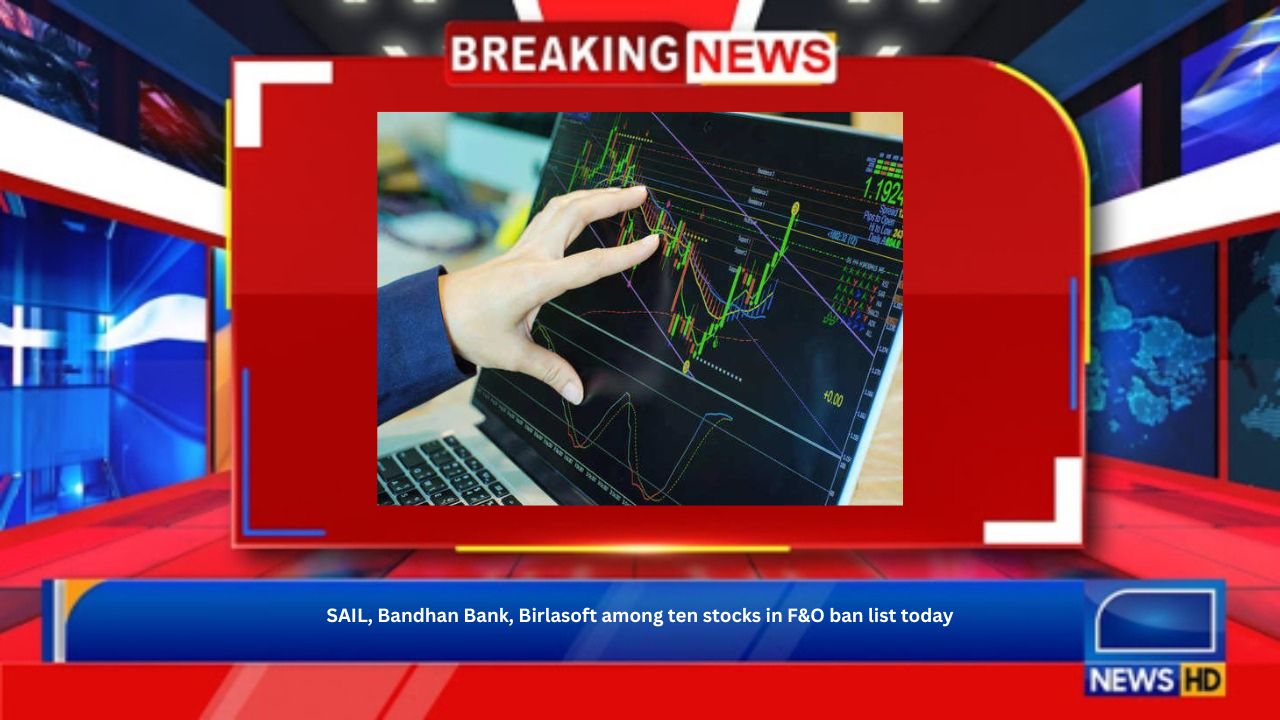In the dynamic world of stock trading, the futures and options (F&O) segment plays a vital role in risk management and speculation. However, regulatory measures are put in place to ensure market integrity and avoid excessive speculation. Recently, on October 9, the National Stock Exchange (NSE) of India announced a ban on trading for ten equities in the F&O segment that violated the market-wide position limit (MWPL) threshold. This decision is crucial for investors to understand as it reflects the ongoing market dynamics, offering insights into trading limitations and market behavior.
Understanding Futures and Options (F&O) Trading
Futures and options are types of derivatives that derive their value from an underlying asset, such as stocks, indices, or commodities. They provide traders with opportunities to hedge against market fluctuations or speculate on price movements. However, to maintain a balanced and fair trading environment, regulatory bodies like the NSE impose position limits on these contracts.
What Are Market-Wide Position Limits (MWPL)?
Market-wide position limits (MWPL) refer to the maximum number of contracts that can be held by market participants for a particular stock. Essentially, it is a mechanism designed to prevent excessive speculation by capping the positions that any single entity can take in a particular security. When the aggregate positions of all participants in a security exceed 95% of the established limit, the NSE places such stocks under trading restrictions in the F&O segment.
Recent Trading Restrictions: Stocks Prohibited from F&O Trading

As of October 9, the following ten stocks have been listed under the NSE’s F&O ban:
| Stock Name | Sector |
|---|---|
| Bandhan Bank | Banking |
| Birlasoft | IT Services |
| GNFC | Chemicals |
| Granules India | Pharmaceuticals |
| Hindustan Copper | Mining |
| IDFC FIRST Bank | Banking |
| Manappuram Finance | Finance |
| PNB | Banking |
| RBL Bank | Banking |
| SAIL | Metals |
The stocks listed above have entered a prohibition period as their derivative contracts crossed the 95% rule, making new positions in these contracts unauthorized. According to the NSE’s guidelines, clients can only reduce their existing positions on these securities through offsetting transactions.
Impact of F&O Restrictions on the Stock Market
The restrictions impact both traders and investors significantly. For traders involved in derivatives trading, the inability to establish new positions in these stocks means they need to adapt their strategies quickly. Investors should also be aware of how such trading bans can affect market sentiment and potentially lead to price adjustments in the cash segment of the stock market.
The Broader Market Context
Interestingly, the broader market showed signs of recovery shortly before the F&O ban announcement. On October 8, the Indian stock markets broke a six-day losing streak. Value investors took the opportunity to acquire shares of blue-chip companies, which propelled the benchmark indices upward. The BSE Sensex gained around 585 points, closing at 81,634.81, while the NSE Nifty closed at 25,013.15, up by 217.40 points.
Market Performance Highlights on October 8
| Index | Change (Points) | Percentage Change |
|---|---|---|
| BSE Sensex | 584.81 | 0.72% |
| NSE Nifty | 217.40 | 0.88% |
Sectors Showing Strong Performance
Following the upward trend, several sectors advanced significantly. According to market data, services saw a 3.25% increase, while capital goods, industrials, power, and telecommunications also displayed positive momentum. This rise indicates that although certain stocks faced restrictions, there was still a robust investor interest elsewhere in the market.
FAQs about F&O Trading and Market Restrictions
1. What happens when a stock is placed in the F&O ban list?
When a stock is placed in the F&O ban list, it means that new positions cannot be created in the derivatives market for that security. Traders can only reduce their existing open positions through offsetting trades.
2. How often is the F&O ban list updated?
The NSE updates the F&O ban list daily based on the compliance of each stock with the market-wide position limit regulations.
3. What implications does the F&O ban have for cash trading of the affected stocks?
The ban applies only to the derivatives segment. Cash trading for the stocks included in the F&O ban list continues to be permissible, allowing investors to buy or sell shares in the regular cash market.
4. Why does the NSE impose a ban on stocks under F&O?
The NSE imposes a ban to ensure market stability and integrity by limiting excessive speculation in the derivatives market. This helps in maintaining a more balanced trading environment.
5. What should investors do when their stock is placed in the F&O ban list?
Investors should monitor the stock closely, understand the reasons for the ban, and adjust their strategies accordingly. It may be prudent to explore opportunities in other sectors or stocks that are not under restriction.
Conclusion
The recent trading ban on ten equities in the F&O segment highlights the importance of understanding the regulatory environment surrounding stock trading. By adhering to market-wide position limits, the NSE aims to safeguard market integrity while allowing participants to engage in trading responsibly. As investors navigate these changes, staying informed about market developments and understanding the implications of F&O restrictions will be critical to making sound investment decisions.
